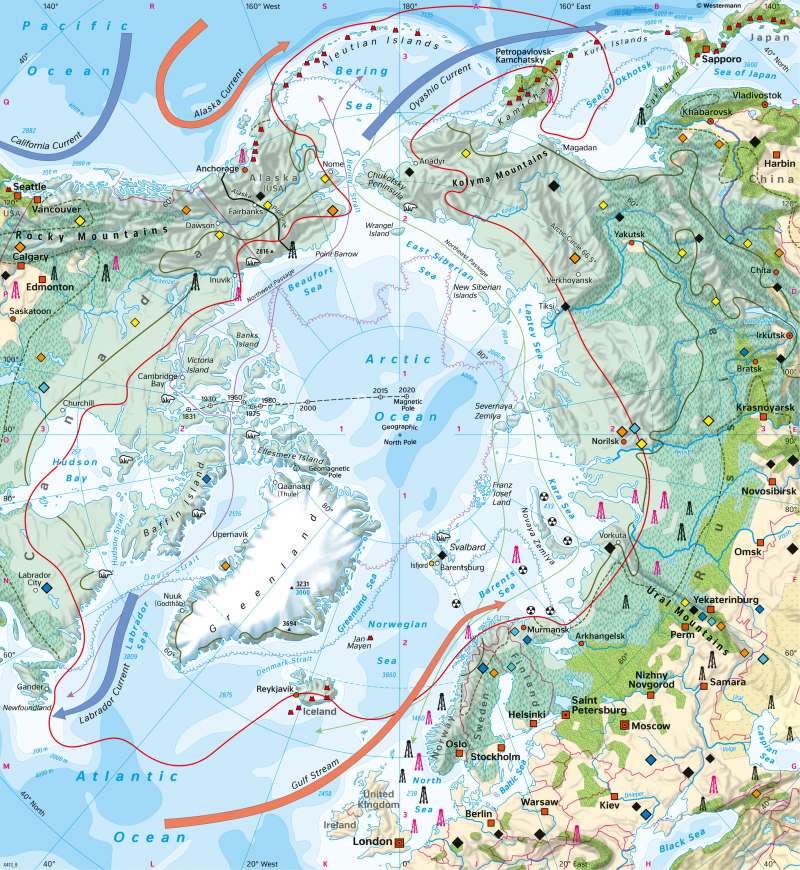North Polar Region (Arctic) - Land cover
Antarctic and arctic environment
978-3-14-100890-6 | Page 199 | Ill. 2

Overview
The area around the North Pole is surrounded by the ocean basin of the Arctic Ocean, which is partly over 5000 metres deep. The Arctic region also includes several islands and the northern coasts of North America, Europe, and Asia.
Climate and landscape
There is no summer in the polar regions as we know it from the middle latitudes. The changing conditions of solar radiation, on the other hand, create light seasons. It remains cold or cool even in the summer months. At the North Pole, the average annual temperature is -18 °C. In Greenland's interior, the ice piles up to form plateau mountains over 3,000 metres high and reaches below sea level in places. In large parts of the Arctic, annual precipitation is low, often less than 500 mm, mainly snow. A borehole in northwest Greenland has revealed ice that is more than 100,000 years old. Because of their age, the large ice masses of the polar regions are considered archives for climate developments on earth.
Vegetation and land use
The vegetation period in the tundra, i.e. the time when plants can grow, is too short and too cool for trees to grow, even in the warmest month. The so-called tree line runs at about the 10 °C isotherm. In the map, an isotherm is a line of equal temperatures. The 10 °C isotherm thus indicates the boundary between an annual average temperature of above or below 10 °C. A shallow layer of thaw forms in summer above the permafrost soil, which in western Siberia extends far to the south. Therefore, all structures and installations (buildings, roads, pipelines) must be especially secured. As the region is very rich in mineral resources, many important raw materials such as coal, oil, natural gas, ores as well as precious metals such as gold and platinum are mined in large quantities under these difficult conditions. Today, more than four million people live in the Arctic. It is estimated that about 830,000 of them are descendants of the indigenous people of this habitat, such as the Inuit, Yakuts, Sámi, and numerous other ethnic groups in north-eastern Siberia.
Currents and extent of ice
Due to the wide opening to the North Atlantic, the Gulf Stream brings warm ocean currents far to the north, keeping the Norwegian coast ice-free. While the regions along the 70th parallel normally experience -10.7 °C, the Norwegian west coast records average annual temperatures of +2.9 °C due to the warm ocean current. The cold counter-current of the East Greenland Current, on the other hand, ensures that Greenland remains mostly surrounded by drift ice even in summer. In addition, the drift ice is driven far south, where icebergs can endanger shipping lines between Europe and North America. Normally, the sea ice is up to three metres thick and exists as pack ice in layers up to 25 metres thick. As a result of global warming, however, the extent of sea ice fell sharply.




